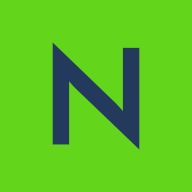

Nasuni and Precisely Assure QuickEDD are both in the data management sector. Users find Nasuni better for scalability and ongoing support, while Precisely is noted for its advanced data protection capabilities.
Features: Nasuni offers centralized data management, unlimited scalability, and robust cloud storage integration. Its backup capabilities further strengthen its offering. Precisely Assure QuickEDD provides advanced data recovery, minimal downtime, and extensive regulatory compliance options.
Ease of Deployment and Customer Service: Nasuni offers streamlined deployment with excellent post-implementation support. Precisely Assure QuickEDD ensures a smooth setup and emphasizes support tailored for complex environments. Both have strong customer service, but Nasuni's cloud-first approach may attract enterprises focused on seamless cloud integration.
Pricing and ROI: Nasuni utilizes a flexible pricing model with cost efficiency attributed to its scalability, showing significant ROI over time. Precisely Assure QuickEDD may require a higher initial investment, but its ROI is justified through enhanced data security and minimal potential loss.
| Product | Market Share (%) |
|---|---|
| Nasuni | 2.0% |
| Precisely Assure QuickEDD | 1.2% |
| Other | 96.8% |

| Company Size | Count |
|---|---|
| Small Business | 3 |
| Midsize Enterprise | 8 |
| Large Enterprise | 24 |
Nasuni is a file data services enterprise focused on assisting firms with their digital transformation, global expansion, and information awareness. The Nasuni File Data Platform is a suite of cloud-based services designed to enhance user productivity, ensure business continuity, provide data intelligence, offer cloud options, and simplify global infrastructure. This platform and its auxiliary services are projected to replace conventional file infrastructure such as network attached storage (NAS), backup, and Disaster Recovery (DR), with an expandable cloud-scale solution. By storing file data in scalable cloud object storage from multiple providers, Nasuni positions itself as a cloud-native alternative for traditional NAS and file server infrastructure. Based in Boston, Massachusetts, USA, Nasuni serves sectors like manufacturing, construction, technology, oil and gas, financial services, and public sector worldwide, offering its services in more than 70 countries.
James J., IT Manager at a marketing services firm, says Nasuni’s management dashboard is helpful because he's able to view all of the different filers at once rather than check each one of them individually. He values the software’s security, reliability, good performance, helpful alerting, and responsive support.
According to a Server Engineering Services Lead at a mining and metals company, Nasuni offers good OR and DR capabilities, performs well, offers data security, and continuous file versioning helps recover from hardware failures.
The Managing Director of IT at a construction company appreciates Nasuni because it eliminates a lot of work that was previously done when managing backing up and restoring data files.
Protecting critical IBM i applications from downtime and guarding against data loss with simple, scalable, full-featured high availability and disaster recovery products
We monitor all Disaster Recovery (DR) Software reviews to prevent fraudulent reviews and keep review quality high. We do not post reviews by company employees or direct competitors. We validate each review for authenticity via cross-reference with LinkedIn, and personal follow-up with the reviewer when necessary.